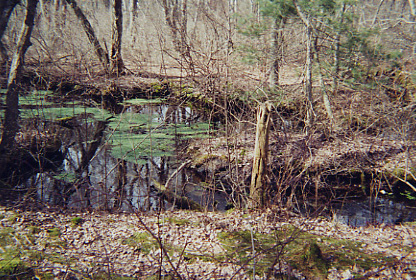 WETLANDS
WETLANDS
Wetlands include freshwater marshes, bogs, swamps, rivers, moist meadows, ponds, lakes, salt marshes and tidal flats. All of these wetlands are integral parts of the ecosystem. Each wetland is special habitat for the animals and plants that live in it. Each is a part of the whole system without which the system begins to break down. Freshwater marshes provide living space for Red-winged Blackbirds, water voles, snails and crabs, and Cattails, rushes, Marsh Mallows, Poison Ivy, and much more.
Bogs support cranberries, and Pitcher Plants, Blue Flag, Sundews and Cotton Grass. Red Maples, Blueberry bushes and Atlantic White Cedar have their own specific swamps. On the banks of quiet rivers may be found True Forget-me-not, Turtlehead, Cardinal Flower, and Spartina pectinata, a tall graceful grass. In the Salt Marsh the related Salt Cord Grass, Spartina alterniflora, and Salt Hay, S. patens, share space with Sea Lavender, Saltmarsh Aster, Spike Grass and several kinds of snails and mussels and spiders.
Moist meadows look like ponds in Spring but are spongy meadows in summer. Wetland plants such as Swamp Candles and Meadow Beauty grow there. Tidal flats are home to clams and worms and very small creatures that live in the sand and mud. Shore birds depend on tidal flats for their food.
Cape Cod has all these habitats to offer. Experiencing them at first hand and learning about their inhabitants increases our appreciation of the amazing interdependence of nature's patterns.